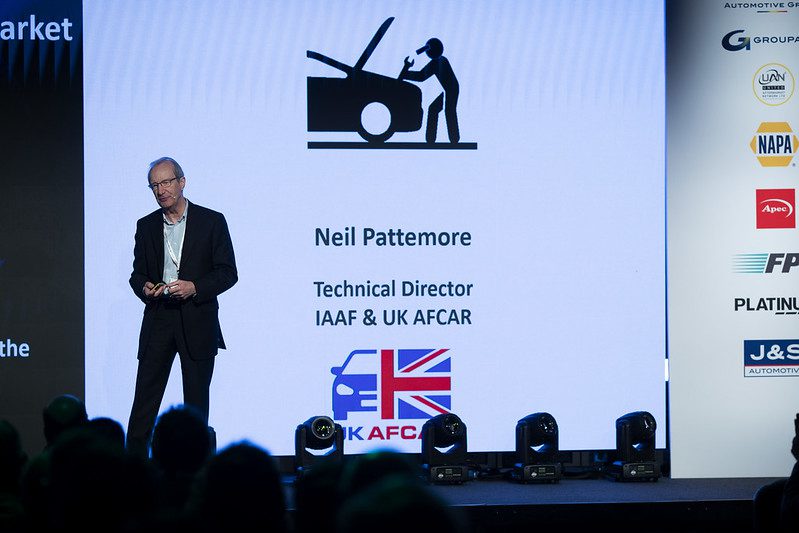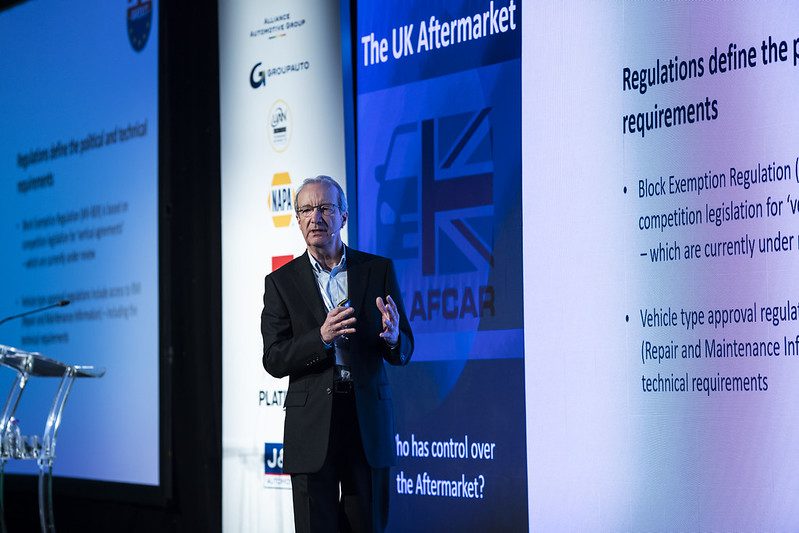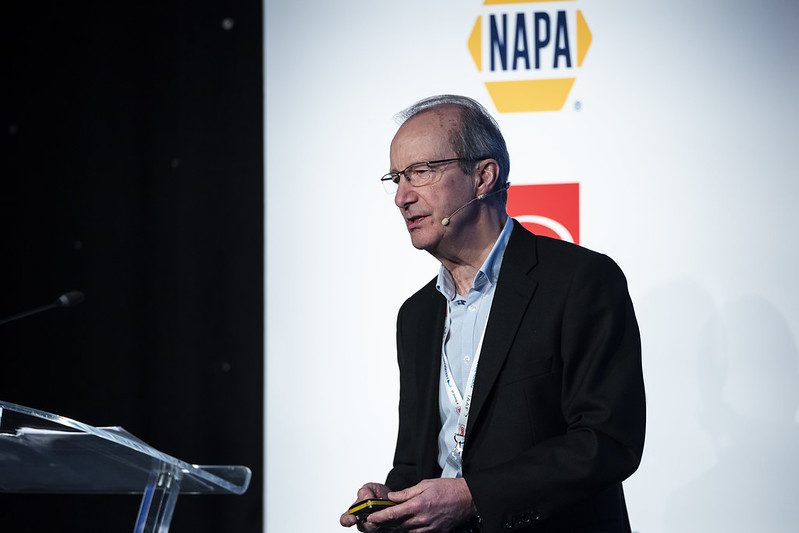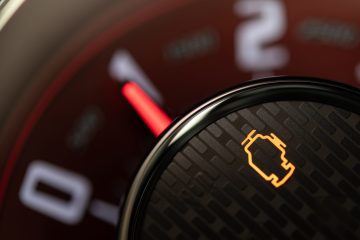The question of who controls the aftermarket is a complex one. The industry is driven by many external factors and has to be. It can never lead the way in new technologies, as its very presence is to repair, upgrade or replace the technologies designed by carmakers, who themselves are becoming increasingly governed by regulations.
There are more complex matters at hand, as legislation changes, and especially with Brexit playing a part.
Who controls the aftermarket?
At the recent IAAF Conference, Neil Pattemore, IAAF and UK AFCAR Technical Director, asked the question ‘who controls the aftermarket?’
“The UK aftermarket currently, and has been for the last 20 years, is very much supported by legislative regulations or directives,” Pattemore stated. “That has continued after Brexit, because the UK still follows type approval legislation and motor vehicle block exemption, which was emanating from Brussels.

One of these regulations which the UK adopted was the Motor Vehicle Block Exemption Regulation (MVBER), which changed in 2010 to bring in ‘hardcore’ restrictions which allows access by independent businesses to the vehicle manufacturer spare parts, and for tier one suppliers to put their parts into the market.
However, it creates competition between the aftermarket and the OEM, which produces challenges of its own. “It is quite difficult to challenge a noncompliance from perhaps a vehicle manufacturer, because it means you need to go through the courts,” stated Neil Pattemore. “That is expensive, time consuming, and most small businesses would never be able to do that on a practical basis.”
Therefore, more legislation was passed, keeping access to the OBD port open, and allowing challenges to be made to the vehicle type approval authorities, allowing them to investigate.
The issue, as Pattemore highlighted, is that this has been happening at a European Commission level for a long time, with member states allowing the authorities to get on with it. Now, however, the UK has to catch up, learn what has been done and agreed, how that has worked and what the aftermarket needs, while it drafts its own legislation. Making it more difficult, the current EU regulations expire at the end of May 2023, leaving the UK government little time to develop something new.
“Who controls the aftermarket? Ultimately the legislator because they set the criteria,” commented Neil Pattemore. “Why is that important? Very simply, we are all here to provide competitive choices to consumers. If they did not want what we, as the aftermarket, offered, they would just go to the main dealers. But over 70 % do not, they come to the aftermarket. That is what we need protecting.”
Changing times with sophisticated vehicles
While legislation changes, so to do the vehicles to which they are legislating. Technology means that today’s cars are less about the engines and wheels, but the systems and software within. Drivers can buy a car, drive it away from the dealership, then add options later, through subscription services and over-the-air (OTA) updates.
“The vehicle manufacturer has directly, as well as indirectly, entered the aftermarket as a service provider,” Neil Pattemore said. “So, they are now offering services. Many of you have probably seen BMW offering OTA services to switch on your heated steering wheel or seats, or other services in the car, like Spotify, whatever else it may be. the reason they are doing that is, well, you only need your heated seats on certain days.”
Speaking with Neil Pattemore after his presentation, Auto Repair Focus editor Phil Curry asked how OTA could result in cars coming into the aftermarket with vastly different profiles to what might be expected, especially second-hand cars. Pattemore stated that there will likely be a need to clear vehicles of data stored within, including apps and subscriptions, due to GDPR compliance. Ultimately it may end up being like resetting a smart phone when it is sold on.
The issue of OTA may not be a competition issue for the aftermarket per se, what the OEM is doing is embedding the software in the car and accessing it through an interface which is not the OBD port. Ultimately, this means they can access the car while it is being driven, and therefore offer bespoke services. They can then keep the aftermarket tied to the OBD connector when the vehicle is static in the workshop.
“That is not fair competition,” stated Pattemore. “This is being driven by vehicle design and functionality. Newer cars have fewer ECUs, as they are able to process data and work as ‘super computers’ and this has changed how carmakers have access to the vehicle.”

This means the balance between the manufacturer and the aftermarket has changed. The OEM is now an administrator, controlling access to in-vehicle data and functions via the OBD connector and the remote telematics interface. However, the carmaker is only interested in the telematics interface, as this gives the best data for them to offer services to drivers. They no longer care about the OBD port. Therefore, garages are not competing against each other or remotely, they now compete against in-vehicle applications.
“What be accessed by whom and for what purpose, now resides with the vehicle manufacturer if you want to do something remote,” said Neil Pattemore. “With that, they are decreasing what is coming through the OBD connector.
“The bottom line here is that the OBD is becoming superfluous. It is an additional cost that has no value. It does not support very high-speed data. It has got limited access to some of the networks in the vehicle. So, the manufacturer will decide, and always has done, will come through the connect, but they are not interested in that.”
This means the point of where effective competition lies has changed. No longer is it ‘workshop to workshop’, as those repairers are already at a disadvantage because authorised dealership will get the information first. The EU Commission are very aware of this problem, yet the UK government, playing catch up, is less aware.
Changing ownership patterns cause challenges
Another issue the aftermarket faces is a change in the way people and businesses own cars. Mobility-as-a-service (MaaS) is a growing sector, whereby cars are leased rather than bought, or fleets are provided for journeys only, rather than sitting parked up when not in use. Autonomous technology is only likely to increase the opportunities for MaaS.
“Mobility is a service, changes the marketplace, vehicle manufacturers, are entering this market in a big way,” commented Neil Pattemore. “The biggest leasing company in Europe, there’s a company called ARVL in France. And last year that was brought by the second largest leasing company in Europe, Volkswagen. Put the two together and they are magnificently the most dominant leasing company in Europe.
“They rent at a competitive rate, and competitive repair costs become a critical part of the offering. But it is the vehicle manufacturers who control the repair services.”
This means that as MaaS grows, vehicle ownership patterns change and the number of outright vehicle owners reduces. Instead, the decisions about where vehicles are repaired are made by the fleet owner, quite often the OEM, or larger leasing firm that is able to deal with OEMs, rather than the independent sector.
Getting the legislation wrong is not an option
“Should we get legislation wrong, we will see a lot of authorised as well as independent operators, really becoming utterly reliant on vehicle manufacturers,” added Pattemore. “We will have similar competencies, similar equipment, perhaps some cost structures.

“That maybe not a bad thing in the independent side, but I do not want that controlled by the vehicle manufacturers, so we want more generic description in legislation. we may well end up with a restricted choice of parts because the vehicle manufacturer will not issue certificate for an aftermarket part, unless we can get into a new process
“And this is the most worrying part. If we do not get this right, the vehicle manufacturer will control who repairs that car using what process, what replacement parts, and probably what hourly rate. It means that they will effectively absorb the profit of the aftermarket into their coffers, to the detriment of the consumer as well.”
What is being done?
According to Neil Pattemore, the UK government’s historic position has been to ‘let market forces rule, let the market find a solution for itself.’
The issue is still that that while they know what to do in legislation, the market will find a way of doing things so it does not have to legislate, therefore it has yet to fully address the issue.
While a new MVBER has been suggested to the government, it has yet to be adopted. The IAAF has been one of the biggest responders to the consultation around this, alongside lobbying against changes to the MOT. Yet the industry needs to support the organisation, come together and help it lobby.
While change comes, it is time to ensure that the aftermarket is protected, and with new legislation required to ensure that the aftermarket is owned by the correct people – that being the businesses that serve it rather than the vehicle manufacturers that create the need for an aftermarket in the first place, making voices heard is more important than ever.




You must be logged in to post a comment.